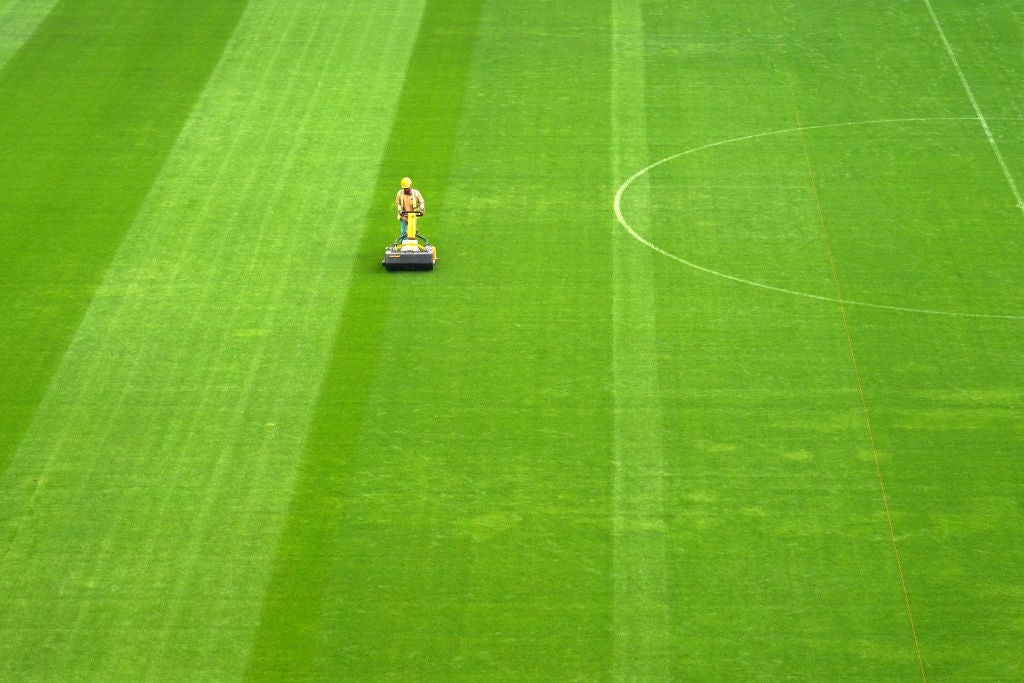The 2022 World Cup host Qatar and organiser FIFA said this would be a climate-neutral World Cup. The plan: limit greenhouse gas emissions as much as possible and use carbon credits to offset the rest.
“The FIFA World Cup 2022 Sustainability Strategy will enable us to deliver a tournament that sets new benchmarks for social, human, economic and environmental development,” says the World Cup 2022 website. “Our goal is to offset all greenhouse gas emissions, while advancing low-carbon solutions in Qatar and the region.”

The 2022 World Cup is rife with controversy. There are allegations of bribery and corruption in the selection of its host; it is estimated that thousands of migrant workers died during related construction projects, according to an analysis by the Guardian (the Qatari government denies this); and a World Cup ambassador from Qatar made homophobic comments in an interview. In addition, the event is shaping up to be the most climate-polluting international sporting event of the past 12 years.
Energy Monitor analysis of emissions reports for the World Cup and Olympic Games held since 2010 shows the 2022 World Cup is forecast to have the highest climate footprint. The Qatar World Cup’s pre-event emissions estimates are slightly more than those of the Rio 2016 Summer Olympics, which was expected to emit 3.6 million tonnes of carbon dioxide equivalent.
A study of the sustainability of the Olympic Games shows that instead of being exemplars of sustainability – as they claim to be – the Olympics are becoming less, not more, sustainable over time. Analysing 16 games since 1992, the researchers conclude that “sustainability remains an elusive concept in the Olympic Games, and in mega-events more generally”.
Another study shows that in recent decades, the Olympics and World Cup have gotten bigger and bigger, with the average edition now 60-times larger than 50 years ago.
In total, the 2022 World Cup will result in more than 3.6 million tonnes of carbon dioxide equivalent, according to FIFA. More than half of these emissions are expected to come from travel, almost 25% from infrastructure construction and operation, and more than 20% from accommodation. More than 150 daily air shuttle flights are scheduled to fly in fans from neighbouring countries alone.
Of the eight open-air stadiums being used for the World Cup, seven were specially built for the event and one underwent reconstruction. In addition, Qatar flies in 140 tonnes of grass seed annually from the US, on climate-controlled aircraft, for 144 stadiums plus training pitches – watered with desalinated seawater made from an energy-intensive gas-fuelled process – according to a Reuters report. Each pitch needs around 10,000 litres (L) of desalinated water in winter and 50,000L in summer.
[Keep up with Energy Monitor: Subscribe to our weekly newsletter]
The 3.6 million tonnes of carbon dioxide equivalent likely underestimates the event’s real emissions levels, says the non-profit Carbon Market Watch. Its researchers argue that the climate footprint of the stadiums may be eight-times higher than estimates from FIFA. That is because FIFA calculated emissions from stadium construction for a lifetime of use, despite all but one being built specifically for the World Cup. It is an open question whether the stadiums will be used after it ends. Stadiums left empty after big sporting events, or ‘white elephants’, can be found from South Africa to Brazil.
Carbon Market Watch is also critical of the carbon offset plan. Qatar is supposed to buy at least 1.8 million carbon credits to offset emissions from the World Cup, but currently there are just six projects approved. Of these six projects – and the almost 700 projects awaiting registration – the majority are related to renewable energy.
“These tend to not be “additional”, i.e. they are likely to happen regardless of whether they can sell carbon credits because renewable energy has become cost competitive in many regions of the world,” argues Carbon Market Watch in the report. “This means that the credits they generate generally have a low level of environmental integrity.”
The largest voluntary carbon offset standards reject grid-connected renewable energy projects – except in the world’s poorest countries – as these projects are financially sustainable on their own and do not need additional carbon financing. The company crediting the offsets for the World Cup, the Global Carbon Council, is also owned by Qatar, resulting in calls for more oversight and universal regulations for carbon offset markets.



